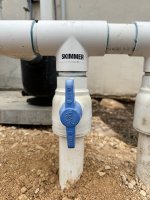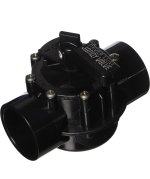The recent freeze damaged three ball valves at equipment pad. I had the two severely damaged valves replaced by a local pool company but didn't realize that the "upgraded" Pentair valves would be priced at $150 each ($550 repair job). The last valve (has a hairline crack and very slow seap) that needs to be changed is pictured below. I'm going to try and replace it myself because I can't afford another $300 for a valve replacement. I can clearly cut the incoming PVC pipe below the valve. My question is where to cut and how to joint the new valve to the existing plumbing above the valve, as there is very little pipe between the current ball valve and the T-fitting. Thanks for any advice!






